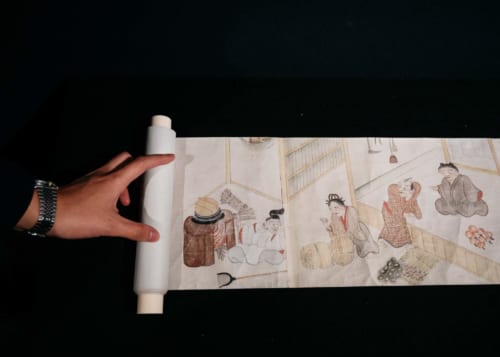You might think saying “thank you” in Japanese is simple, but it’s more nuanced than it seems. On any given day, I find myself using two key phrases: sumimasen 済みません (I’m sorry) and arigatou 有難う (thank you). Interestingly, the line between these phrases can blur, as I’ll explain.
In Japanese culture, apologizing is often more about politeness than admitting fault, as discussed in our previous article. This is why sumimasen is sometimes used to express gratitude, akin to saying, “Thank you for allowing me to inconvenience you.” While arigatou directly translates to “thank you,” mastering its use — like apologies — requires understanding cultural nuances.
Whether you’re traveling to Japan or learning the language, knowing when and how to say “thank you” is a key part of connecting with Japanese culture. Keep reading to discover the art of expressing gratitude and the subtle overlap with apologies.
What Does Arigatou Mean?
Let’s start by looking at the origin of the Japanese term thank you, arigatou. This word is often seen written in the Japanese alphabet of hiragana ありがとう, and many of us are probably also familiar with the longer arigatou gozaimasu ありがとうございます, which is a more formal way to thank someone.
When separating the Chinese characters called kanji 漢字 that makes “arigatou,” “ari” 有り means “to have” and “gato” 難う “difficult” katai; 難い. Together, the phrase translates to “(it is) difficult to have (it, so I’m thankful)”.
The Origins of Arigatou — Thank You in Japanese
The concept behind arigatou is believed to have come from Buddhist teachings that one should always be appreciative because everything happens for a reason, and that nothing should be taken for granted.

Written records suggest that arigatou did not take on its current meaning until after the Heian period (8th–12th century AD). An interesting theory proposes that arigatou may have been influenced by the Portuguese word obrigado, meaning thank you. This idea stems from the significant impact Portuguese Catholic missionaries had on Japanese history.
4 Ways to Say Thank You in Japanese
The word arigatou can be used in different ways depending on the formality of the situation. Starting from the most casual form:
- Domo どうも
A simple domo as a shortened form of thank you can be used very casually, for instance, when you are exiting a store that you’ve just visited.
- Arigatou ありがとう / Arigatou gozaimasu ありがとうございます
Both arigatou and arigatou gozaimasu can be used to thank someone for doing something for you, for example, to a waitress refilling your water, and domo arigatou gozaimasu to thank someone for a bigger favor or when you have received a gift.
- Domo arigatou gozaimasu どうもありがとうございます
The term “domo” is literally “very,” while “gozaimasu” is the polite form of “to have” (aru; ある). It can be confusing, but for the sake of simplicity, remember the longer the expression, the more formal it is.
- Arigatou Gozaimashita あがとうございました
The past tense, arigatou gozaimashita, is used when you have received a service or favor, or for something that’s happened already. As with the above, adding domo to the front will emphasize your appreciation further or make it more formal.
Polite Expressions for Business Settings
In business settings, even more polite expressions beyond the basic arigatou phrases are used to show thanks to people of higher rank or social levels. Remember that a polite bow should always accompany an expression of thanks.
- Sumimasen すみません
- Osore-irimasu 恐れ入ります
Whilst both of the above look more like apologies, they are basically interpreted as “I’m sorry to trouble you and I thank you for that.” Note that these apologetic phrases will not make much sense by themselves, so you will often hear them combined into something like:
Sumimasen, domo arigatou gozaimashita.
Osore-irimasu ga, makoto ni* arigatou gozaimasu. (*Makoto ni = sincerely)
When it comes to the less common ways of saying thank you in Japanese, these are typically reserved for specific contexts, such as working in customer service or handling serious situations. The key to expressing gratitude is sincerity, not necessarily using elaborate or formal phrases. Even a simple arigatou can be meaningful when spoken earnestly. Pairing your words with a polite bow adds depth to your appreciation, often saying more than words alone. Whether you’re learning Japanese or planning to visit, focusing on genuine expression will help you connect better and navigate Japanese culture with respect.
Cover photo by Clay Banks







No Comments yet!